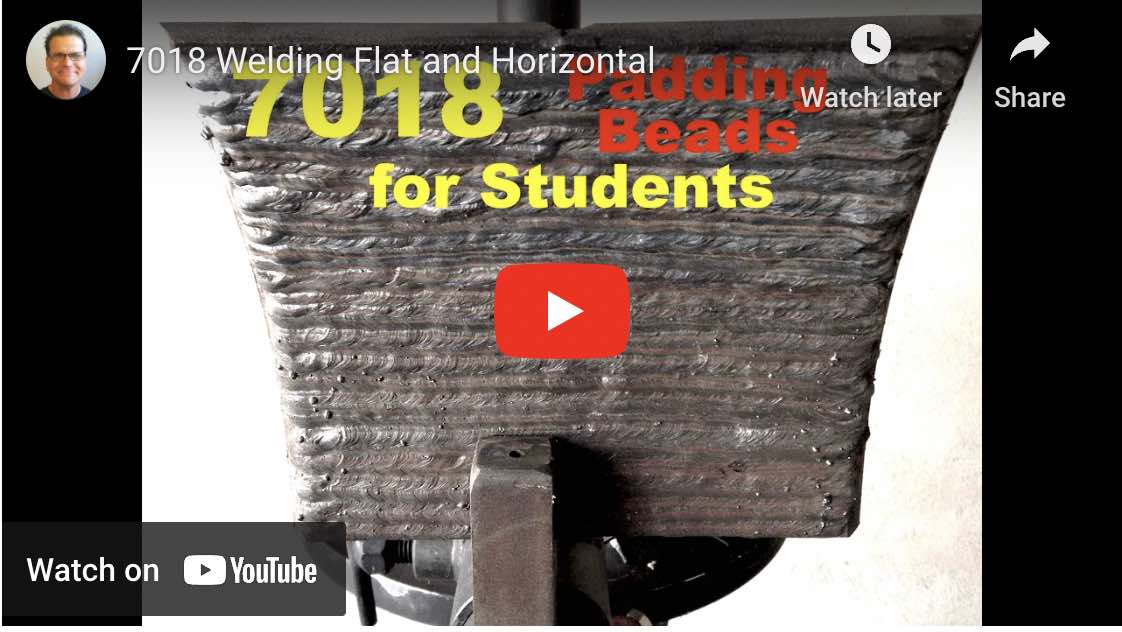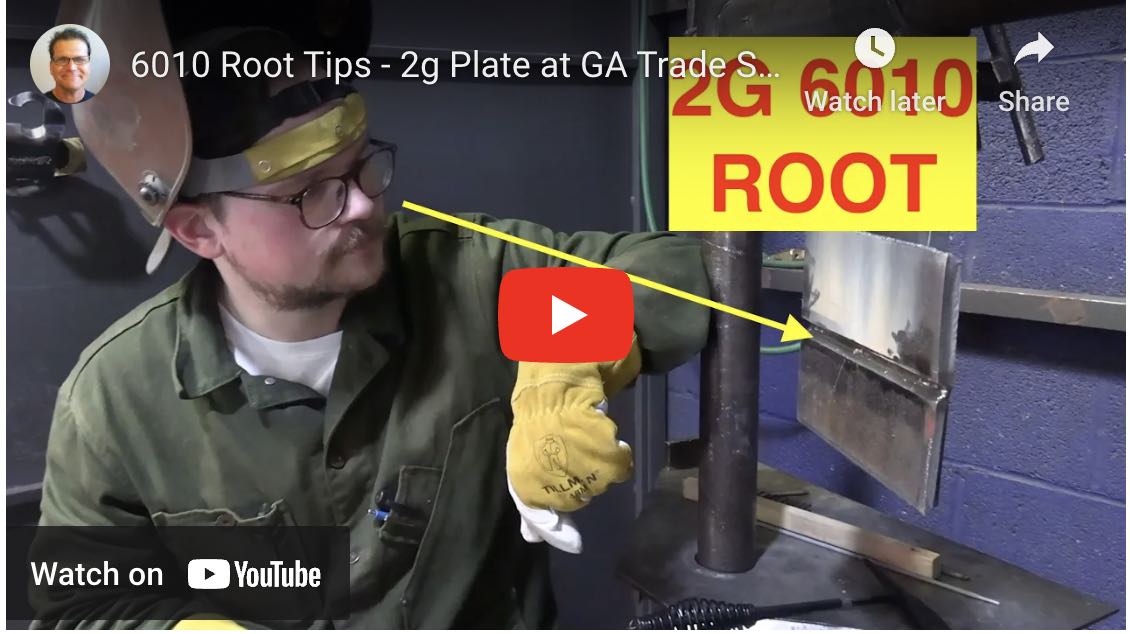How to Stick Weld Better
- HOME
- STICK WELDING
- How to Stick Weld Better
How to stick weld better with 7018
6010 root pass 2g plate
Wondering How to Stick Weld Better?
Becoming a better stick welder requires a combination of knowledge, practice, and attention to detail.
Here are some key factors that can help you improve your stick welding skills:
- Knowledge of welding principles: Familiarize yourself with the basic principles of welding, including the different types of electrodes, welding positions, and joint configurations. Understand how variables like current, voltage, and travel speed affect the welding process. Voltage is affected a lot by arc length in stick welding but also by the type of welding machine used. Understanding more about voltage and volt amp curves can help you learn how to stick weld better.
- Proper electrode selection: Different welding electrodes have unique characteristics and are suitable for specific applications. Choose the right electrode based on the material you're working with, joint configuration, and welding position. Consider factors like electrode diameter, coating type, and current rating.
- Good welding technique: Develop a consistent and steady hand movement to maintain a stable arc length. Maintain a proper electrode angle (usually around 10-15 degrees) and manipulate the electrode with smooth and controlled motions. Practice maintaining a consistent travel speed to ensure penetration and fusion.
- Adequate preparation: Prepare the base metal properly by cleaning it thoroughly to remove mill scale, rust, paint, and other contaminants. While it is true that stick welding burns thru mill scale and rust better than other welding processes, you will get better results if your metal is clean. Taking the time to get a good fit-up is also important.
- Understanding electrical settings: Gain a good understanding of the electrical settings on your welding machine. Adjust the current and voltage settings based on the electrode type, thickness of the base metal, and welding position. Understand what each setting does, and experiment with different settings to find the optimal parameters for each welding task.
- Safety precautions: Welding involves various hazards, such as UV radiation, fumes, and sparks. Always wear the necessary personal protective equipment (PPE), including a welding helmet, gloves, protective clothing, and take steps to protect your lungs too whether with a respirator or by using a fan to move fumes away from your breathing zone. Ensure proper ventilation in the welding area to minimize exposure to harmful fumes.
- Practice, practice, practice: Like any skill, stick welding requires practice to improve. Dedicate regular time to welding practice, focusing on different joint configurations, welding positions, and materials. By practicing consistently, you can develop muscle memory and improve your technique. But practice needs to be focussed and intentional.
- Learn from experienced welders: Seek guidance from experienced welders or take welding classes to learn from their expertise. They can provide valuable tips, tricks, and feedback to help you refine your skills.
- Analyze weld quality: After each welding session, inspect your welds critically to identify any defects or areas for improvement. Look for issues like lack of fusion, porosity, undercut, or excessive spatter. By analyzing your welds, you can identify areas where you need to make adjustments and focus on improving.
- Stay updated: Keep yourself informed about the latest advancements in welding technology, techniques, and best practices. Attend workshops, seminars, or industry events to stay up-to-date with new developments and gain insights from professionals in the field.
Remember, learning how to stick weld better takes time and effort. With practice, patience, and a commitment to continuous improvement, you can enhance your stick welding abilities and achieve better results.
Different Types of Stick Welding electrodes
Stick welding, also known as shielded metal arc welding (SMAW), uses several different types of electrodes to create an electric arc that melts the metal and forms a weld. Here are some different types of stick welding electrodes:
- Rutile Electrodes (E6013): These are general-purpose electrodes commonly used for welding mild steel. They have a thin coating of rutile, which provides good arc stability and ease of use. Rutile electrodes produce smooth and clean welds, making them suitable for both beginner and experienced welders.
- Basic Electrodes (E7018): Basic electrodes have a coating rich in calcium carbonate and calcium fluoride. They are primarily used for welding low-alloy and medium-high carbon steels. Basic electrodes offer excellent penetration and strong welds, making them ideal for heavy-duty applications and structural welding.
- Cellulose Electrodes (E6010, E6011): Cellulose electrodes have a cellulose-based coating that produces a deep, penetrating arc. They are used for welding in all positions, including vertical and overhead, and are known for their ability to bridge gaps and provide strong, high-quality welds. Cellulose electrodes are often used in pipeline welding and maintenance work.
- Iron Powder Electrodes (E7018-1): Iron powder electrodes are an improved version of the basic electrodes. They have a coating that contains iron powder, which enhances the deposition rate and weld metal efficiency. These electrodes provide high strength, low hydrogen welds and are commonly used in structural welding, pressure vessel fabrication, and other applications where high-quality welds are required.
- Stainless Steel Electrodes (E308, E309, E316): Stainless steel electrodes are specifically designed for welding stainless steel. They have a coating that provides good corrosion resistance and helps maintain the desired mechanical properties of the stainless steel. Different types of stainless steel electrodes are available, such as E308 for general-purpose stainless steel, E309 for dissimilar metal welding, and E316 for welding stainless steel with higher molybdenum content.
- Hardfacing Electrodes: Hardfacing electrodes are used to build up or overlay a wear-resistant surface on a base metal. They contain alloying elements that enhance hardness, wear resistance, and impact resistance. Hardfacing electrodes are commonly used in applications such as mining equipment, agricultural machinery, and industrial components subject to high wear.
These are just a few examples of stick welding electrodes. There are many other specialized electrodes available for specific applications and welding requirements, such as cast iron electrodes, nickel electrodes, and more. It's important to select the appropriate electrode based on the base metal type, welding position, desired weld characteristics, and specific project requirements.

















